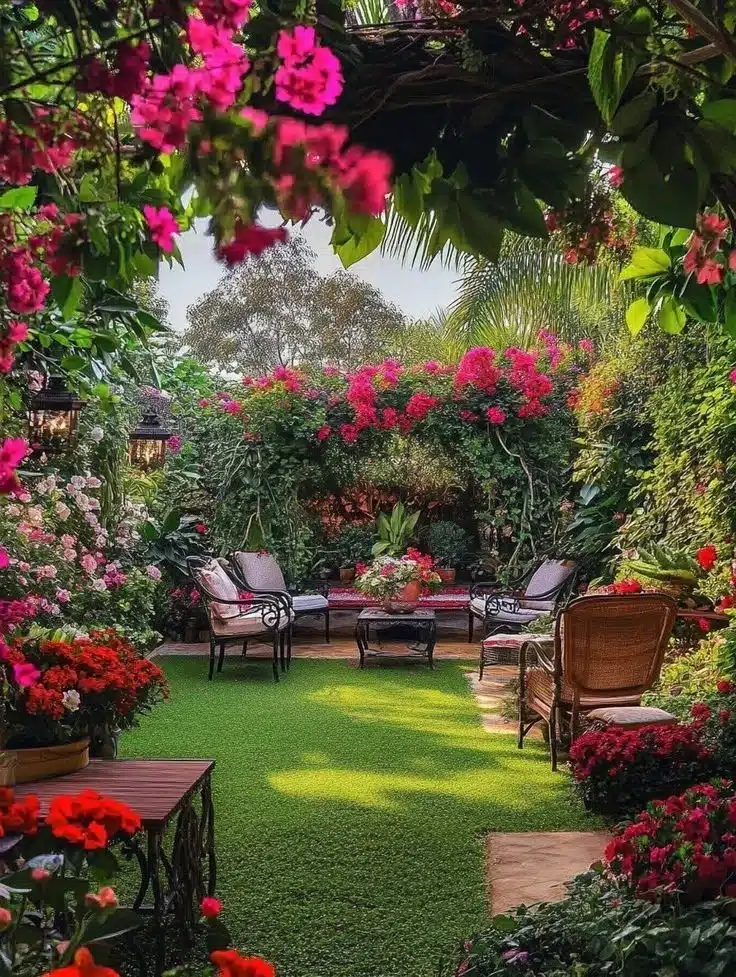
Gardening is a fulfilling and productive hobby that offers numerous benefits, including aesthetic pleasure, fresh produce, and a deeper connection with nature. For those eager to learn how to plant a garden, it is essential to approach the task with knowledge and preparation. In this article, we will explore various methods, from creating a garden bed to using landscape fabric, while incorporating tips tailored specifically for beginners.
Table of Contents
ToggleUnderstanding the Basics of Gardening
Before discussing how to plant a garden step by step, beginners must first understand the fundamental concepts of gardening. The process begins with selecting the right location, which should offer ample sunlight, appropriate drainage, and ease of access. As you consider how to plant a garden, take note of the climate and soil conditions in your area, as these factors significantly affect plant growth.
How to Plant a Garden Bed
A garden bed serves as the foundation of your gardening efforts. To learn how to plant a garden bed effectively, follow these steps:
- Choose a Suitable Location: Select an area that receives at least six hours of sunlight daily.
- Clear the Area: Remove any grass, weeds, or debris to prepare the soil.
- Define the Boundaries: Use wooden boards, bricks, or other materials to create a defined edge for your garden bed.
- Loosen the Soil: Use a hoe or tiller to aerate the soil, ensuring the roots of your plants can grow freely.
- Amend the Soil: Add organic matter such as compost to enrich the soil.
These steps are foundational for understanding how to plant a garden bed where your plants can thrive.
How to Plant a Garden Step by Step
Now that the garden bed is ready, it is time to delve deeper into how to plant a garden step by step. This process includes choosing plants, planting, and maintaining them.
- Select Your Plants: Whether flowers, vegetables, or herbs, choose species that suit your climate and garden goals.
- Spacing: Pay attention to the recommended spacing for each plant type. Overcrowding can hinder growth and increase susceptibility to disease.
- Planting: Dig holes that are twice as wide and just as deep as the root ball of your plants. Place each plant gently into the hole and backfill with soil.
- Watering: After planting, thoroughly water the area to help settle the soil and reduce any air pockets.
By mastering each step, you will feel confident about how to plant a garden and ensure its success.
How to Plant a Garden on a Slope
For those dealing with uneven terrain, knowing how to plant a garden on a slope can present additional challenges. Erosion can be a significant issue, so consider the following techniques:
- Terracing: Create flat areas on the slope to hold soil and plants.
- Contour Planting: Plant in layers along the contours of the hill to reduce runoff.
- Ground Cover: Utilize plants that stabilize the soil, such as clover or creeping thyme, to help prevent erosion.
Understanding these strategies will expand your knowledge of how to plant a garden under different conditions.
How to Plant a Garden in a Raised Bed
Raised beds offer a variety of advantages, including better soil drainage and easier pest control. Follow these steps on how to plant a garden in a raised bed:
- Build the Frame: Use rot-resistant wood or concrete blocks to create a structure approximately 12-24 inches high.
- Fill with Soil: Use a mix of topsoil, compost, and other organic materials to create a nutrient-rich environment.
- Water: Before planting, ensure the soil is damp but not waterlogged.
By doing so, you will have a clear approach to how to plant a garden in a raised bed, making it easier to manage your plants.
Using Landscape Fabric and Other Techniques
When learning how to plant a garden with landscape fabric, it is paramount to understand its benefits in weed suppression. Here’s how to effectively integrate landscape fabric into your gardening strategy:
- Laying the Fabric: Cut the fabric to fit over the garden bed and secure it in place with landscape pins.
- Cutting Holes: Make slits for your plants, allowing them to grow while blocking weeds.
- Mulching: Adding mulch on top of the fabric can enhance the aesthetic appeal while providing additional weed control.
Additionally, understanding how to plant a garden using a weed barrier, such as black plastic, follows a similar approach: control weeds while allowing moisture to permeate the soil.
How to Plant a Garden from Seeds
Planting from seeds is a rewarding method for new gardeners. Here’s how to plant a garden from seeds:
- Sow Indoors: Start seeds indoors according to the seed packet instructions, commonly 6-8 weeks before the last frost.
- Transplant: Once seedlings mature and the frost date has passed, harden them off before transplanting to the garden bed.
- Direct Sowing: For quick-growing vegetables, you can also sow directly into prepared soil.
These instructions provide a comprehensive understanding of how to plant a garden from seeds, a significant skill for any aspiring gardener.
How to Plant a Garden Box
Planting in a garden box, or container gardening, offers flexibility and minimizes space requirements. Here’s how to plant a garden box:
- Choose the Right Box: Select appropriate materials that can accommodate drainage.
- Fill with Soil: Use a quality potting mix for optimal growth.
- Select Plants: Opt for plants that thrive in containers, such as herbs, lettuces, and small flowers.
By learning how to plant a garden box, you can successfully grow a variety of plants without the need for extensive ground space.
Creating a Garden on a Hill
When tackling the challenge of how to plant a garden on a hill, consider utilizing terraced gardening techniques to promote effective water retention and plant stability.
- Identify Levels: Determine where to create flat beds for planting.
- Support with Retaining Walls: Use stones or timber to build walls that hold the soil.
- Plan for Drainage: Ensure that each terrace has proper drainage to prevent water accumulation.
This adaptation enables you to take full advantage of the natural landscape while effectively applying methods on how to plant a garden on a hill.
Conclusion
Gardening is an art that requires careful planning and execution, particularly for beginners venturing into this rewarding activity. By following the steps outlined in this article on how to plant a garden, you will be well-equipped to start your gardening journey, whether planting seeds, filling raised beds, or utilizing landscape fabric.
The knowledge gained from understanding various methods enables even novice gardeners to cultivate their green spaces successfully. Ultimately, gardening, whether in a traditional garden bed or unique features like raised boxes or slopes, is about nurturing growth and enjoying the fruits of your labor.






